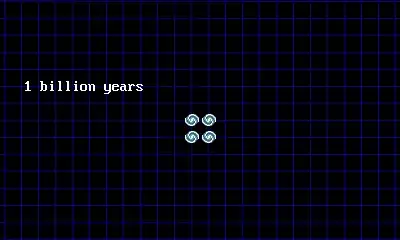When we talk about the expansion of the Universe, we're really saying that space is being created between all matter. Let me explain.
Imagine setting up a grid that keeps track of all points in space. "Expansion" just means that the distances between objects on the grid are getting larger. In essence, more space is being created between the objects. Below is a gif I've made to demonstrate this:

A more useful way to describe this is to say the grid is expanding — that space itself, as a coordinate system, is growing. As an analogy, imagine are walking your dog. Suddenly, the ground begins expanding between you. You and your dog will separated and continue receding away from each other. So the same thing is happening with our universe.
The grid is in fact growing, and objects are being swept away with it. A consequence of this is that they can recede away from each other faster than light; while objects are indeed limited in how fast they can move through space, there is no limit as to how fast space can be created between them.
Now that we've gotten the core concepts down, I'll introduce one more bit of terminology. The "scale factor of the Universe" refers to how much the Universe has expanded, compared to now. For example, if in a billion years the scale factor is 3, that means that every object in the Universe is 3 times farther from each other compared to now. If the scale factor 700 million years ago was 0.8, then everything was closer by a factor of 0.8 at that time. By definition, the scale factor is 1 right now.
So, if the Universe is expanding now, we'd expect it to be smaller as we look further back in time — i.e. the scale factor would be less. General relativity predicts the scale factor to be zero at 13.8 billion years ago. This would mean that every object would be zero times its current distance from us — in other words, there would be no space.
If you think a Universe without space is impossible, you're correct. We apparently have a contradiction. In GR, you can't have a spacetime with zero space.
Our modern physical theories work fine up a few fractions of a second after the moment of contradiction, and our observations do agree with the idea of an extremely dense early universe. However, our theories break down as we try to model the Universe at earlier and earlier times, until they no longer prove accurate, preventing us from explaining the most interesting moment.
This is why the moment of the Big Bang is one of the biggest mysteries in cosmology. Theories like quantum gravity have arisen to try to explain the conditions near the Big Bang, but none are sufficient as of now.

How can space be 'disconnected' when it's really just a proxy for distance between things?
– Randy Zeitman Jun 11 '19 at 19:35